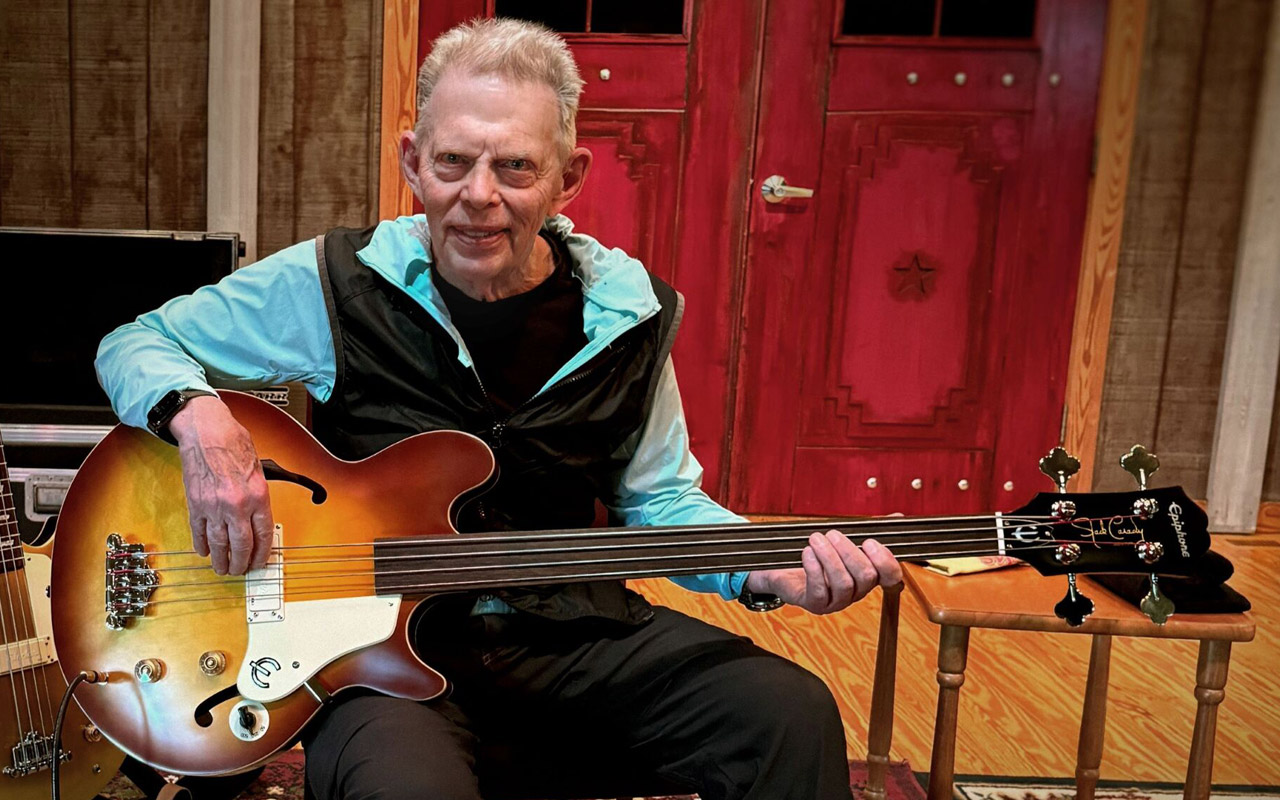Jack Casady and Epiphone—a new fretless bass partnership rooted in music history
Epiphone has again teamed up with Rock and Roll Hall of Famer Jack Casady to release a fretless version of his original semi-hollow signature bass. The Jack Casady Fretless Bass is available now in the Aged Royal Tan finish for a timeless appearance at home in many genres.
The world’s most popular semi-hollow electric bass, the Jack Casady Signature Bass has remained in continuous production longer than any other Epiphone signature model, and this new fretless release is poised to bring thunderous low-end and nuance to bassists looking to expand their palette.

Image: The Jack Casady Fretless Bass brings a new array of fretless tones to players seeking a classic semi-hollow design
Originally created by Casady and the Gibson and Epiphone design teams in the 1990s, this instrument is the result of years of experimentation by the Jefferson Airplane and Hot Tuna bassist, aiming to create a bass with an exceptional electric tone and the responsiveness of an acoustic bass.
Now available in a fretless configuration for the first time, this iteration retains the Casady-designed JCB-1 Low-Impedance Humbucker™ pickup and a three-position rotary impedance control, offering a wide range of tonal versatility.
What are some highlights of the Jack Casady Fretless Bass?
The bass features a layered maple body serving up a rich semi-hollow tone. With a three-point adjustable bridge, you’ll gain complete control over your action as you glide up and down the fretless C Profile neck.
The neck is mahogany with a laurel fingerboard, which complements an already warm tone coming from the Casady-designed JCB-1 Low-Impedance Humbucker pickup. With a master volume and master tone and a three-position Varitone tone and impedance switch, you’ll have all the control you need.

Image: The Jack Casady Fretless Bass features a signature graphic and an Epiphone Sloped Dovewing headstock
What is the origin story of the original Jack Casady Signature Bass?
In conversation with Richard Akers, Sr. Product Development Engineer, we learned that an internal connection led to the development of the original Casady signature model. He relates, “In the late 1990s, Jack was introduced to the Gibson and Epiphone teams by Mike Lawson, who was working for Gibson at the time. Mike was well connected to many of the San Fransico bands that rose to prominence in the late 60s and had a close relationship with Jack.
“Jack had a long history with his 1970s era Gibson Les Paul Signature Bass and had some improvements he wanted to implement on a potential Casady signature bass when he approached Gibson. Due to production limitations at Gibson, Jim Rosenberg, the President of Epiphone at the time, spoke with Jack about the possibility of an Epiphone version, and Jack was 100 percent on board with developing the bass at Epiphone.
“After preliminary discussions, Jack came to Nashville and spent several days working with the Head Designer, JT Riboloff, and me on developing a new pickup and electronic package and perfecting all aspects of the bass construction. Production of the bass was initiated in 1996 and first brought to market in 1997.”

Image: Jack Casady performing at an Epiphone event for the 20th Anniversary Edition of the Jack Casady Bass
Part of the design goal for the bass was to improve on the platform of his original Gibson model. Akers clarifies, “Jack had a lot of history with hollowbody basses, including his main 1970s Gibson Signature bass. Many aspects of the build of the Epiphone version were based directly on his early Gibson Les Paul Signature Bass.
“The one aspect Jack was focused on improving were the pickups and electronics. A lot of time and effort went into developing the low-impedance pickup used on his signature bass and perfecting the electronics to provide the tonal flexibility and fidelity demanded by Jack. Jack Casady told Epiphone, ‘My goal was to have a fairly simple operating instrument, but one that would respond to many different styles of playing.’
“Prototype development was based upon detailed measurements of his original 1970s Gibson LP Signature and months of development on the low-impedance pickups and electronics package. It took around a year and a half to get to a point where everyone was happy. Production was initiated in South Korea with me, JT, and Jim Rosenberg at the factory on a regular basis to ensure the highest quality.”

